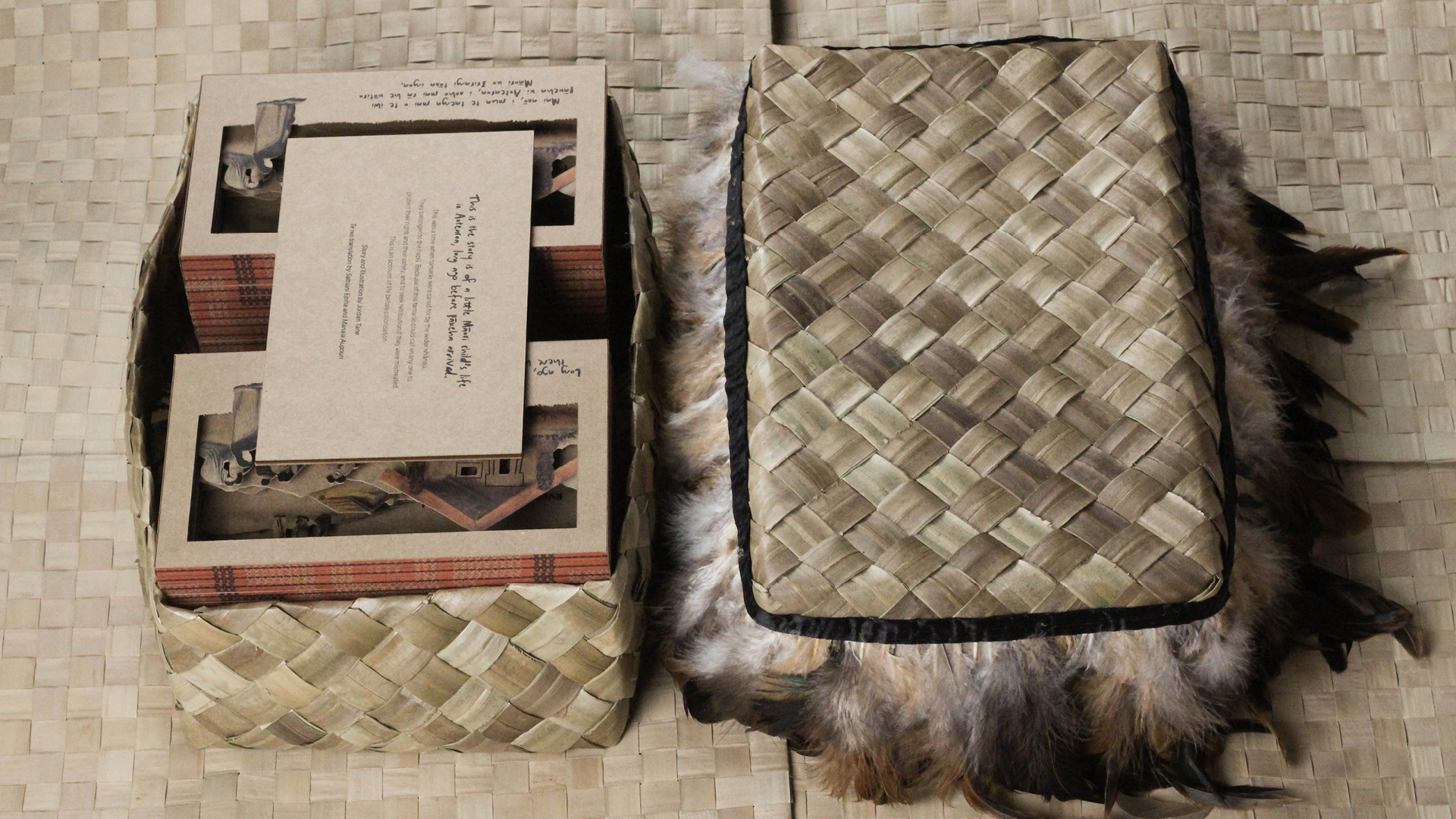

Jordan Tane
Ka mua, ka muri
https://www.instagram.com/jordanleetane/

Looking back in order to move forward
An educational tool in the form of a tactile interactive story that can be read to whānau members by whānau members to educate and restore the traditional meaning of whānau. There comes a time in order to be healthy, there needs to be healthy relationships within our whānau. The Kaupapa Māori approach embedded in this resource will appeal and resonate with those who tell and listen to this memorable story. Presented in a harakeke kete, it can be gifted to the next generation.
Māori are disproportionately represented in the statistics of whānau violence in Aotearoa today. This narrative-based project compiles traditional whanau framework and makes it visible to promote whānau ora. The indigenous whānau framework operated differently before colonisation. After colonisation, Māori were forced into the European family model of single-family dwellings where the man was the breadwinner and made all the decisions.
We should no longer accept Westernised family structures as a way to live. Instead, we should return to relationships that carry a collaborative approach which is caring and carries the knowledge and dignity of ancestors; is intergenerational and that all these qualities are passed on to future generations.
The story is of a little Māori child’s life in Aotearoa, long ago before pakeha arrived. It narrates what and who were important to her and the interaction between herself and her whānau. It explains how cherished, safe and protected she felt.
This was a time when tamariki were cared for by the wider whānau. They belonged to the hapū. Because of this, tamariki could call on anyone to protect their rights and their safety, and to seek retribution if they were mistreated.
This is an account of life before colonisation.



